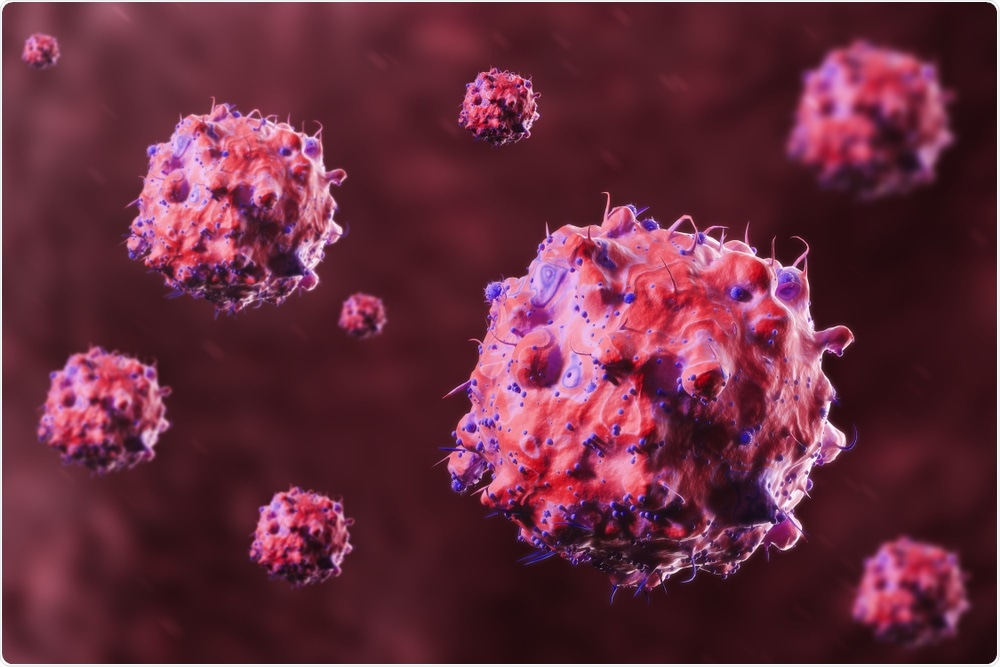Scientists have discovered that the cause of cancer is “written” within the DNA of tumors, a finding that could help doctors to pinpoint the triggers underlying the development of individual tumors.
 ImageFlow | Shutterstock
ImageFlow | Shutterstock
Previously, the roots of many cancer have been unclear, with doctors unable to attribute the disease to any particular culprit among the myriad of carcinogens encountered by people every day in air pollution, pesticides, cigarette smoke, and sunlight, for example.
Even in the case of lung cancer, scientists have not been able to quantify the link between the cancer and smoking or other factors such as inhaling pollutants at work or living close to major road.
In Britain, approximately 360,000 people are diagnosed with cancer each year, and around 163,000 die from the disease. Scientists estimate that about 38% of cases are preventable, but the current finding could lead to better estimates of just how fatal exposure to certain factors can be.
DNA is comprised of molecules called nucleotides that are represented by the letters A, C, G, and T. Mutations occur when exposure to a carcinogen alters one of the letters, so that A becomes G, for example.
During cell division, cells copy their DNA, along with any mutations. With each mutation, the likelihood of another, more dangerous mutation increases. If enough mutations accumulate, cells begin to grow out of control and a tumor forms. Each carcinogenic agent mutates the DNA in a slightly different way.
Now, researchers at Cambridge University and King’s College London have discovered that tumors contain clues in the DNA that point to what has caused them to form.
As reported in the journal Cell, they have linked certain environmental triggers with specific DNA mutations that cause cancer, potentially leading to ways of deducing exactly what has caused a tumor to form.
Each cancer type had a uniqe ‘fingerprint’
For the study, Dr. Serena Nik-Zainal and colleagues exposed human stem cells to 79 carcinogens including solar radiation, substances in tobacco smoke and various chemotherapy drugs. They then recorded alterations in the DNA of tumors as they formed, which provided a ‘mutational signature’ or ‘fingerprint’ they could use to identify the culprit.
The team found fingerprints (caused by 41 agents) that could be observed in cells and then compared those fingerprints with the mutational signatures seen in human cancers.
Artificial mutations similar to those seen in cancers linked to UV exposure were induced, along with those replicating exposure to tobacco smoke similar to those observed in smoking-associated lung cancers. The chemotherapy drugs cisplatin and carboplatin also produced signatures consistent with the ones observed in myeloid tumors that had formed in people after chemotherapy
The team also identified the fingerprints produced by some dietary chemicals and a few chemicals present in diesel exhaust fumes.
Mutational signatures are the fingerprints that carcinogens leave behind on our DNA, and just like fingerprints, each one is unique. They allow us to treat tumors as a crime scene and, like forensic scientists, allow us to identify the culprit – and their accomplices – responsible for the tumor.”
Dr. Serena Nik-Zainal
A mutation 'encyclopedia' for doctors
Co-author David Phillips says the technique has enabled the team to create the most comprehensive catalog to date of the DNA changes produced by environmental agents across the entire human genome: “It should allow us to examine a patient’s tumor and identify some of the carcinogens they have been exposed to that may have caused the cancer.”
“Our reference library will allow doctors in future to identify those culprits responsible for causing cancer,” adds Dr Nik-Zainal. “Such information could be invaluable in helping inform measures to reduce people’s exposure to potentially dangerous carcinogens.”
In the future, the team hopes to broaden the catalog of fingerprints to create an “encyclopedia” of the mutation patterns caused by environmental agents.